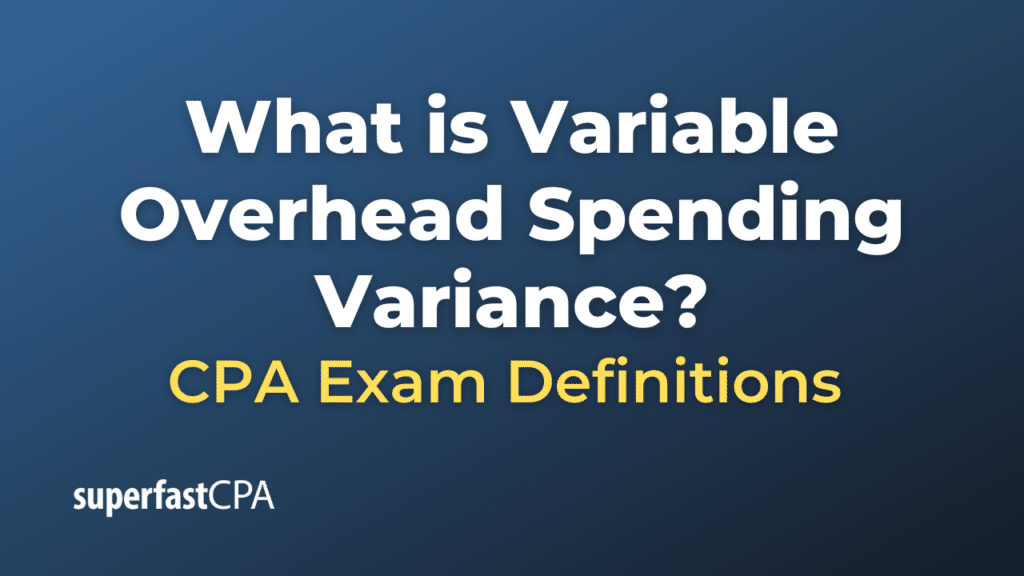Variable Overhead Spending Variance
Variable Overhead Spending Variance is a measure used in managerial accounting to evaluate the difference between the actual variable overhead costs incurred and the expected (or budgeted) variable overhead costs based on the actual hours worked. This variance helps organizations understand how well they are controlling their variable overhead costs.
The formula to calculate Variable Overhead Spending Variance is:
Variable Overhead Spending Variance = (Actual Variable Overhead Rate − Standard Variable Overhead Rate) × Actual Hours Worked
A positive variance is considered unfavorable, as it means that the actual variable overhead costs exceeded the expected costs. Conversely, a negative variance is favorable, indicating that the actual costs were less than expected.
Example of Variable Overhead Spending Variance
Let’s consider an example involving a fictional company that manufactures paper notebooks.
Scenario:
- Standard Variable Overhead Rate: $6 per hour
- Actual Variable Overhead Rate: $7 per hour
- Actual Hours Worked: 800 hours
Step 1: Calculate Variable Overhead Spending Variance
Using the formula, the Variable Overhead Spending Variance would be:
Variable Overhead Spending Variance = (Actual Variable Overhead Rate − Standard Variable Overhead Rate) × Actual Hours Worked
= ($7/hour − $6/hour) × 800 hours
= $1/hour × 800 hours
= $800
Summary:
In this example, the Variable Overhead Spending Variance is $800, which is an unfavorable variance. This means that the company spent $800 more on variable overhead costs than expected, based on the standard rate and the actual hours worked.
The management would likely investigate this variance to identify the root cause. Possible reasons for the unfavorable variance could be an increase in utility rates, an unanticipated rise in the cost of supplies like lubricants or cleaning materials, or temporary labor that was more expensive than planned.
By understanding this variance, the company can identify areas for improvement and potentially adjust its future budgets or negotiate better rates with suppliers to align actual costs with expectations.













